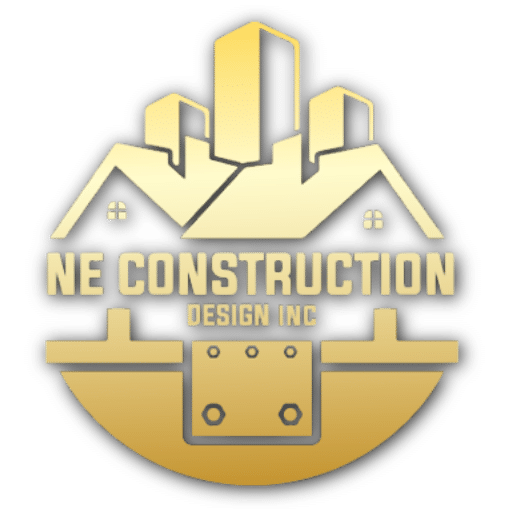FAQ
Let's Get Your Questions Answered
At NE Construction & Design, we strive to be be as informative and transparent as possible for our clients. If you still have any questions, we're happy to help. Just give us a call.
Foundation Inspection
How do I prepare for a foundation inspection?
Ensure easy access to your foundation, including removing any objects that might block access to areas like the basement or crawl spaces. Also, having any relevant documents about past inspections or repairs available can be helpful.
Is a foundation inspection disruptive to my property?
No, foundation inspections are non-invasive and designed to assess the foundation without causing damage to your property.
Foundation Replacement
When is a full foundation replacement necessary?
A full foundation replacement is necessary when there are widespread structural issues that cannot be effectively remedied through repairs. This includes severe foundation settling, significant cracking, or damage from natural disasters that compromise the overall integrity of the foundation.
What are the benefits of choosing NEConstruction for foundation replacement?
Choosing NEConstruction ensures you receive expert service from licensed professionals specializing in modern foundation solutions. We use the latest technology and high-quality materials to ensure your new foundation is robust, durable, and compliant with the latest building codes, providing long-term safety and value to your home.
Foundation Retrofitting
What is seismic retrofitting and why is it necessary?
Seismic retrofitting involves modifying existing structures to make them more resistant to earthquake activity. This is essential in earthquake-prone areas like Southern California to protect homes from damage during seismic events, ensuring the safety of the occupants and helping to maintain the property’s value.
How do I know if my home needs seismic retrofitting?
If your home was built before modern seismic codes were implemented, particularly if constructed before 1980, it might not be adequately fortified for earthquake safety. Signs that your home may need retrofitting include unbraced cripple walls, a lack of foundation bolting, or previous earthquake damage. A professional inspection can provide a definitive answer and recommend specific retrofit measures.
Foundation Underpinning
What is foundation underpinning, and when is it necessary?
Foundation underpinning involves strengthening and stabilizing an existing foundation that is failing due to factors like soil instability, erosion, or structural changes. It is necessary when signs of significant foundation settlement are observed, such as structural cracks, uneven floors, or doors and windows that stick or won’t close properly.
How long does foundation underpinning take to complete?
The duration of an underpinning project can vary widely depending on the method used and the complexity of the job. Typically, underpinning can take anywhere from a few weeks to several months. We aim to provide a realistic timeline during our initial assessment, ensuring minimal disruption without compromising on quality.
House Leveling
What is house leveling and why is it necessary?
House leveling is the process of adjusting the foundation of a home to bring it back to a level position. It’s necessary when a house has settled unevenly due to soil instability, moisture issues, or other foundation-related problems, which can lead to structural damage and decreased property value.
How long does the house leveling process take?
The duration of the house leveling process varies depending on the severity of the issue and the method used. Typically, it can take from a few days to several weeks. We aim to minimize disruption and will provide a detailed timeline after assessing your specific situation.
Retaining Walls
What are the benefits of installing a retaining wall on my property?
Retaining walls offer numerous benefits including preventing soil erosion, managing water runoff, increasing usable land by terracing sloped areas, enhancing property aesthetics, and potentially increasing property value. They are crucial for maintaining the structural integrity of your landscape in sloped areas.
How do I choose the right type of retaining wall for my property?
The choice of retaining wall type depends on several factors including soil type, slope gradient, load requirements, and aesthetic preferences. During our initial consultation, we assess these factors to recommend the most suitable type of retaining wall for your specific needs, ensuring functionality and design harmony with your landscape.
Sister Foundation
What is a sister foundation and why might I need one?
A sister foundation is a structural reinforcement process that involves adding a new foundation segment alongside or integrated with an existing foundation. This technique is used to enhance the structural integrity of buildings with damaged, weakened, or aging foundations, ensuring they can support the current and future loads.
How long does the sister foundation installation process take?
The duration of the sister foundation installation varies based on the scope of the project and the specific methods used. Generally, the process can take from a few days to several weeks. We aim to minimize disruption and will provide a detailed timeline based on a thorough initial assessment of your property.
Slab Foundation Repair
What are common signs that my slab foundation needs repair?
Common signs include visible cracks in the foundation or floors, uneven or sloping floors, gaps around windows or doors, and difficulties in opening or closing doors and windows. These symptoms indicate that your slab foundation may be experiencing structural issues.
How long does slab foundation repair typically take?
The duration of slab foundation repairs can vary greatly depending on the severity of the damage and the repair method used. Minor repairs like crack filling can be completed quickly, while more extensive underpinning or slab jacking might take several days to a few weeks. We strive to minimize disruption and will provide a detailed timeline based on your specific situation.
